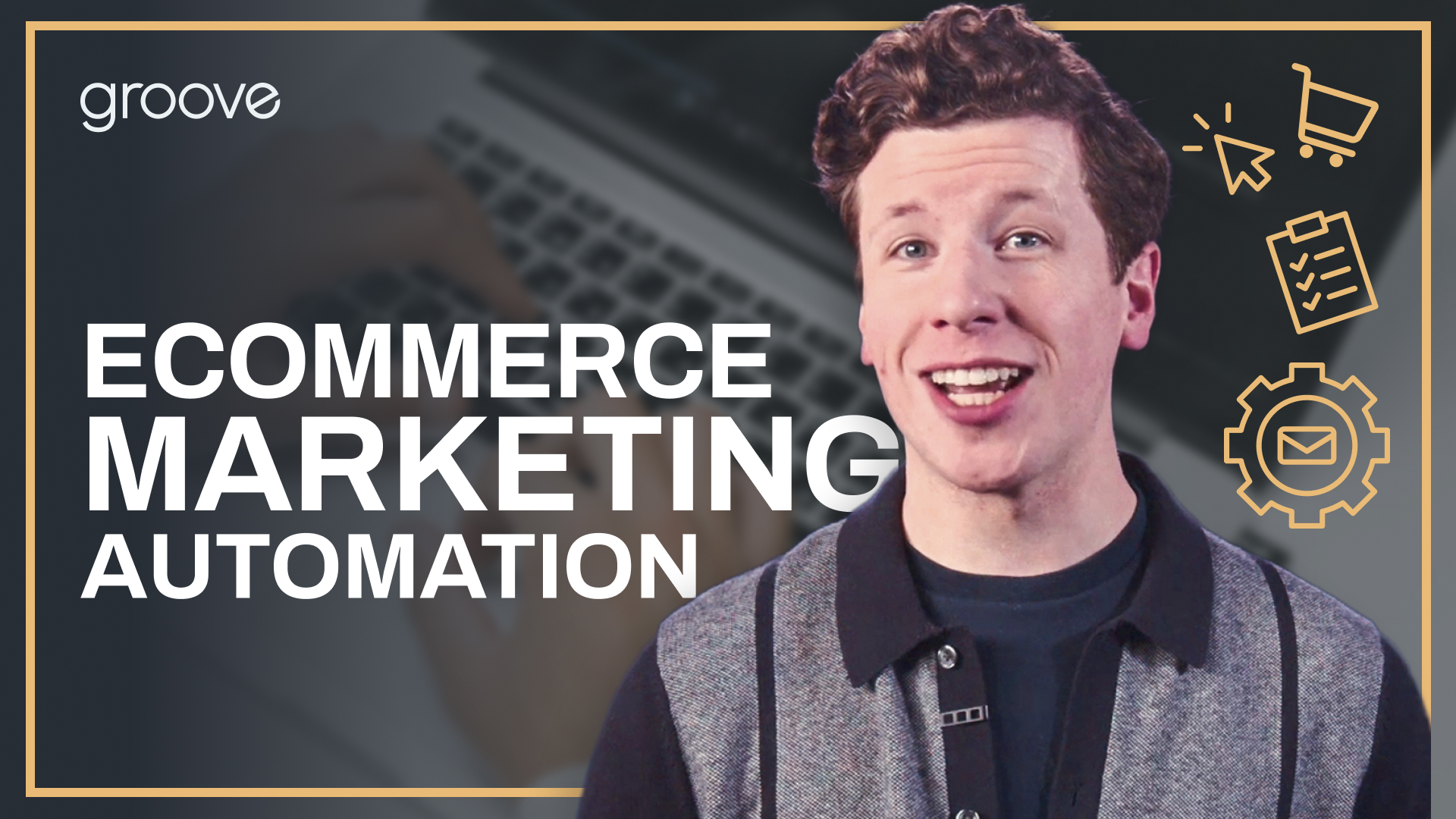Improving productivity is a constant goal for businesses of all sizes. However, the saying, “Time Is Money” means that companies (individual employees) will need to do more, in a shorter amount of time, to increase productivity. No matter how driven and talented your coworkers may be, they don’t have a second brain or a third arm.
Thankfully, there are modern solutions that present added-value to the end consumer which results in increased revenue for your brand. That solution? eCommerce Marketing Automation.
Why eCommerce Marketing Automation?
As the eCommerce landscape continues to rapidly evolve (some might say mutate), businesses must adopt cutting-edge technologies and processes to stay competitive in the marketplace. Marketing automation offers a powerful solution by allowing you, and your coworkers, to accomplish more without investing additional time.

By implementing an effective marketing automation strategy, you can make your workload lighter, accomplish more, and generate more revenue. You should look at eCommerce marketing automation as an integral part of your marketing approach to focus on long-term performance.
Understanding Basic eCommerce Automations
One of the key components of marketing automation is “Flows” or “Series”, which refer to a combination of email and SMS communications.
These automations consist of a series of emails and text messages that are automatically sent when a recipient meets specific conditions (more on those conditions later). The tool we most commonly recommend to our clients to reach these goals is Klaviyo, although there a various others available.
The benefits of automations to you as an online retailer include improving customer engagement, promoting customer loyalty, keeping your brand top of mind and increasing customer lifetime value (CLV).
Benefits of Marketing Automation
Implementing eCommerce marketing automation offers numerous benefits for your business:
- Time savings: Automation allows you to run processes seamlessly in the background, enabling you to increase operational efficiency without increasing your workload.
- Data-driven insights: Automation provides valuable data which you can use to refine your marketing strategies and personalize your communications.
- Engaging existing customers: By nurturing existing relationships you can foster loyalty, encourage repeat purchases, and create brand advocates.
- Gathering customer feedback: Automated emails provide an opportunity to collect feedback from your customers. By understanding their needs, preferences, and pain points, you can make informed decisions to enhance your products, services, and overall customer experience.
What Is a Welcome Series?
A popular example of email automation is what is commonly referred to as a “Welcome Series."
For example, suppose a brand new website visitor signs up for your brand’s newsletter, before purchasing an item. Upon clicking (or tapping) the submit button, they automatically enter this series within your email service provider (ESP).
The Welcome Series is an opportunity to showcase your brand identity and help customers understand who you are, what you offer, and most importantly why they should choose your product or service over competitors.

An example of a Welcome Series Flow could look like the following
- Day 1: Email With Introductory Time-Sensitive Discount Code
- Day 2: SMS With Introductory Time-Sensitive Discount Code
- Day 3: Email With Complete Brand Catalog
- Day 6: Email with testimonials, reviews, etc
- Day 8: Email & SMS About Discount Code Expiring
This example Welcome Series Flow is rather simple, but demonstrates how both email and SMS work together to aim for a single result, a sweet first-time purchase.
When planning a Welcome Series, it's important to ask yourself the following questions:
- What do I want my contact to do? (Call To Action, CTA)
- What key information do I want customers to know about my brand?
- How do I want them to feel? How can I invoke that feeling?
- In what ways can I encourage them to make a purchase?
What Is an Abandoned Cart Flow?
When a customer adds items to their cart but fails to complete the purchase, it is referred to as cart abandonment. Studies estimate that eCommerce brands lose $18 billion in revenue annually due to cart abandonment. Situations like these present an opportunity for businesses to recapture potential revenue.
You know who added the items to their cart, you know what items they want to purchase, now it is time to figure out why they did not follow through. This can be achieved through an expertly strategized Abandoned Cart flow.

By Sending The Following:
- Timely & Personalized Reminders
- Offering Time-Sensitive Incentives
- Addressing Concerns Head-on
You can increase the chances of converting those website visitors into paying customers.
However, it doesn’t start and end there. Checkout process optimization is another crucial aspect of reducing cart abandonment. By streamlining the checkout process, eliminating unnecessary steps, and ensuring a user-friendly experience, you can significantly impact conversion rates. Studies have shown that effective checkout optimizations can increase conversions by 35.62 percent.
What Is a Post Purchase or Cross-Sell Flow?
Post Purchase flows focus on engaging with customers after they have completed a purchase. These flows aim to continue the positive experience associated with your brand, nurture customer loyalty, and encourage repeat purchases.

An effective post-purchase flow should incorporate the following elements:
- Show appreciation: Emphasize to your customers how valuable they are to you. Expressing gratitude can go a long way in fostering long-term relationships.
- Personalize content: Make product recommendations or provide helpful tips and information that align with their interests based on first-party data.
- Avoid overwhelming your customers: While it's important to stay engaged with your customers, be cautious not to bombard them with too many emails.
- Collect feedback: Feedback can help you improve your products, services, and overall customer experience, enabling you to refine your strategies further.
By implementing these automation strategies, and others such as "Back-in-Stock" automations, you can build stronger relationships with your customers, drive repeat purchases, and increase customer satisfaction.
Conclusion
Incorporating marketing automation into your eCommerce strategy can yield significant benefits for your business. By automating your emails, you can save time, target customers more effectively, engage existing customers, and gather valuable feedback. eCommerce marketing automation is not just a time-saver; it is a powerful tool that can optimize your marketing efforts, boost customer loyalty, and drive revenue growth.
Master the art of email marketing with our in-depth analysis in 'Klaviyo Vs Attentive: Which Email and SMS eCommerce Marketing Platform You Should Choose in 2024 & Beyond'. Discover the key differences and learn how to leverage each platform for maximum impact.
To further enhance your automation strategies and explore the best practices for your business, consider reaching out to our team at Groove Commerce. Our 15 years of expertise and guidance can help you strategize and implement automation techniques tailored to your specific goals and objectives.

E-BOOK
20 Best Shopify Apps For Your eCommerce Store
Explore tags:
About the author
Subscribe to the Groove Newsletter
Get the latest updates and insights straight to your inbox




